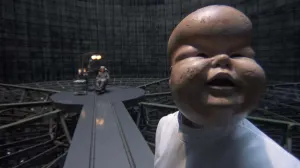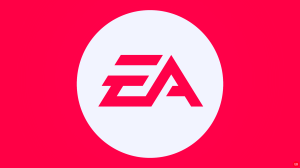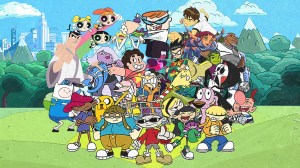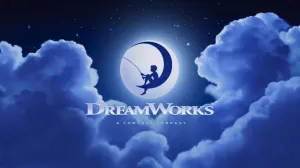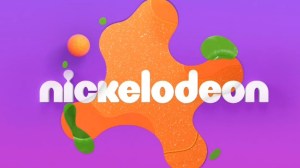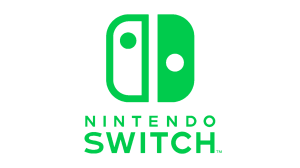More than a decade after its first release, The Sixth Gun creators Cullen Bunn and Brian Hurtt are returning to the world of The Damned, a period drama in which Prohibition-era mobsters and cops find themselves running in the same circles as well-dressed demons from hell.
Videos by ComicBook.com
Bunn and Hurtt joined ComicBook.com to discuss the series, which returns this year from Oni Press, beginning with a new trade paperback collecting the existing material, remastered and in color.

The new books will be a series of miniseries, kicking off with the first wholly-new content in Prodigal Sons, about which Bunn and Hurtt have a little bit to say below.
First of all, this series has been around for a while. What made now the right time to reapproach The Damned, and what, if anything, is significantly different in the new take?
Cullen Bunn: Yes, this book has been around for a long time. It was my first professional comic book experience, just over ten years ago. We only did eight issues back then, though, and Brian and I both had to move on to other projects. But we always thought we’d return to this book.
In fact, I don’t think there was ever a time when we weren’t talking about continuing this story. Now’s the right time because we’re coming off ofThe Sixth Gun, and we’re hoping the readers who enjoyed that book will love this one just as much. The biggest change with the existing material is, of course, that it is now being presented in full-color!
Brian Hurtt: As Cullen said, The Damned has been a project that we never let go of. All during our run on The Sixth Gun we would return back to this world in our conversations–our hope all being that it would be the project that followed Sixth Gun.
Color is obviously a big part of this book. How was the look of the series developed?
Bunn: I’ll admit that I was hesitant when we discussed coloring The Damned. I thought that the grey tones were such a big part of the book’s personality. I did, however, have complete faith in Bill. I knew that if anyone could do it, he could. And his work has simply blown me away. He managed to breathe new life into the series but also kept the noir feel totally intact!
Hurtt:There was a lot of concern that losing the grey tones would be detrimental to the mood of the book. I never had that concern myself but I was nervous about how fans might react to the change. We needn’t have worried. Everyone has been blown away by the work that Bill has done on the book so far. This world seems more alive than ever before!
You gentlemen have all been working together pretty consistently over the last decade with The 6th Gun. Is it strange to kind of revisit the world of The Damned, and to look back at those decade-old books and take stock of where you were when it started?
Bunn: It’s pretty weird. When I was first writing The Damned, I was trying to break in. And even after that book was published, it took me a while to get another writing gig. My life as a writer is completely different now than it was then.
Hurtt: As an artist, I know that I’m not alone in cringing whenever I look back at old work — whether it was ten years ago or just yesterday. At the same time it is super exciting to look at what we did all those years ago and to feel that challenge of honoring — while also improving on — what came before. It’s fun to bring everything we’ve learned about comic storytelling in the past decade to bear on this project. There’s a sense of coming full circle.
Obviously the existing material has been pretty self-contained so far. How do you come back to it years later, and make it an ongoing story, without changing the feel of the material?
Bunn: The great thing about the story is that we always intended it to be an ongoing. We always had a much, much longer story in mind. You see it more, I think, in the second limited series, Prodigal Sons. That is quite obviously part of something bigger that we weren’t able to get to at the time. So I don’t feel like it took a lot of work on our part to expand what has come before. This is the plan we’ve been working with for 10 years. Some elements have changed, but we still know where we are going with this. It’s very similar to how we approached The Sixth Gun, having a final destination in mind.
Now, we are filling in some blanks between the Three Days Dead story (in the soon to be re-released trade paperback) and the Prodigal Sons story (which will hit around issue 6 of the ongoing). That’s probably the biggest change, but we’re definitely not upsetting the apple cart. The new material is just adding some layers to the tale.
I would say that the lettering in this book plays a pretty significant role in shaping its aesthetic, too. Particularly when you see the stylized, border-free dream sequences, was that a discussion you guys had together or did the letterer bring that to the table?
Bunn: I don’t think I’m remembering wrong, but Brian did all the lettering for the first series. Well, I did 2 pages of the lettering, but Brian thought I was too slow. (I was.) So those decisions all fall on him.
Hurtt: I did do all the lettering on the first series. In the original edition, all the lettering was done by computer with the exception of the sound effects and the dialogue of some of the creatures (including the “Harvester” from the border-free scenes). We decided to have our new letterer (Crank) choose a font that would come close to the style of the hand-lettered originals and redo all those scenes. The book is much more unified in it’s look now and better for it.
Visually, this book is obviously a period piece — as was The Sixth Gun. What’s appealing to your sensibilities about having that kind of removal from time and place when you’re telling a story?
Bunn: I can tell you that a period piece doesn’t hurt when it comes to returning to book after 10 years. If this had been a modern story, can you imagine all the flip phones we would have had to change to iPhones?
But this Prohibition era is just a setting that we’ve always loved and been drawn to. I think, visually, it gives us something completely unique to hang our hat on. And while Brian does a ton of real world research, I think the fact that our story takes place in a city “removed from time and space” gives him the opportunity to really build some character into those buildings and bridges and back alleys.
Hurtt: I’ve always found a lot of appeal in period pieces. To me, it’s like traveling to another world. It is a place that does not exist (anymore). It’s fun to go into these periods and bring with us a pop-comic sensibility that is our own and hasn’t been done in quite the same way.
The other great benefit of period pieces is that they don’t suffer from becoming dated in the same way that comic set in a modern world, with modern vernacular can.
In a book that’s filled with some bizarre and dreamlike imagery, do you think the “period” element helps that along?
Bunn: To some degree, I think it does. As I mentioned before, I feel like our “real world” city has a kind of brooding, Universal Horror Movie vibe, even before the demons show up. It looks like a city in which demons should run the mob! And then we cut to these scenes of this otherworldly Purgatory, and that stuff is even more weird and bizarre, but there are still these ancient, crumbling structures, like another teeming metropolis that fell long, long ago.
In this time since The Damned debuted, you guys have all become much more visible in the comics industry and (particularly Cullen) have worked on a number of more kind of “popcorn” and mainstream work. Is there something really fulfilling about a book like The Damned, which balances those sensibilities with so much kind of playing around with the medium?
Bunn: It’s really, really gratifying that no matter how many books I’ve written, whenever I go to a convention, one of the questions I am asked the most is “When are you returning to The Damned?” It means a lot to me that this little book, which is the first thing I had published, still resonates with those who read it.
Now, we have the opportunity to get a much wider audience on this title. The trade paperback is offered at a great introductory price. The first issue of the ongoing is a buck. For $11 you can get a wonderful entry into this world. I’m really hoping that in another 10 years people will be coming up to me at conventions (or the old folks’ home, who knows?) telling me how much they loved the epic story we told.
Hurtt: It’s incredibly fulfilling to work on our creator-owned books. Both The Damned and The Sixth Gun are worlds that we have built together with only he and I being the arbiters of what is right for these stories and these universes. There is no one ever telling us what we can or can’t do. I mean, it’s the dream of any comics creator to do what we are–telling the stories that we want to tell exactly how we want to tell them. It’s left to the readers to decide whether we’ve succeeded or not.

